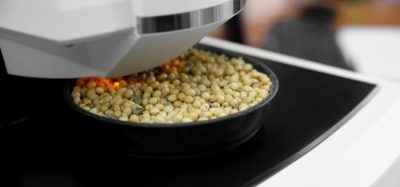Quick shelf life prediction: TNO develops unique microbial genomics toolbox
- Like
- Digg
- Del
- Tumblr
- VKontakte
- Buffer
- Love This
- Odnoklassniki
- Meneame
- Blogger
- Amazon
- Yahoo Mail
- Gmail
- AOL
- Newsvine
- HackerNews
- Evernote
- MySpace
- Mail.ru
- Viadeo
- Line
- Comments
- Yummly
- SMS
- Viber
- Telegram
- Subscribe
- Skype
- Facebook Messenger
- Kakao
- LiveJournal
- Yammer
- Edgar
- Fintel
- Mix
- Instapaper
- Copy Link
Posted: 3 December 2008 | TNO, Food and Biotechnology Innovations | No comments yet
Consumers demand healthy, tasty foods with a fresh appearance and a long shelf life. To meet these expectations, the food industry has to be innovative in product and process optimisation. TNO has developed a unique microbial genomics toolbox that enables food manufacturers to quickly predict shelf life and design new preservation strategies.
Consumers demand healthy, tasty foods with a fresh appearance and a long shelf life. To meet these expectations, the food industry has to be innovative in product and process optimisation. TNO has developed a unique microbial genomics toolbox that enables food manufacturers to quickly predict shelf life and design new preservation strategies.
Consumers demand healthy, tasty foods with a fresh appearance and a long shelf life. To meet these expectations, the food industry has to be innovative in product and process optimisation. TNO has developed a unique microbial genomics toolbox that enables food manufacturers to quickly predict shelf life and design new preservation strategies. Over the last decennia, consumers have become more and more self-conscious. They demand foods that are not just tasty, but are healthy and fresh as well. They are looking for products with a long shelf life and that are easy to prepare or ready to eat. In addition, for logistic reasons, retailers are asking for tasty ready meals with sufficient shelf life. Due to shrinking margins, food manufacturers are aiming to keep production costs as low as possible.
Microbial quality
Balancing consumer and retail expectations, food manufacturers are continuously improving product formulations and production processes and developing new ones. However, with every adaptation, for example in the amount of sugar, salt, acids or fat in a product, the microbial quality is influenced. Frank Schuren, Senior Scientist with TNO in Zeist explains: “Sugar and salt have an impact on the water activity on the product, thereby increasing the growth possibilities for microorganisms. Minimising the acid content to achieve products (e.g. sauces) with a mild flavour also influences microbial quality. To minimise the outgrowth of micro-organisms, a certain pH in combination with organic acids is needed. Low fat spreads and margarines increase the risk of spoilage because, compared to butter, they have a longer water phase. This will lead to a different environment that may enable growth of bacteria that were not present in these products before.” Manufacturers may also turn to minimal processing techniques such as ultra high pressure (UHP) or want to replace synthetic (E-numbers) by natural preservatives. “In all cases, the microbial quality of the product changes and the manufacturer has to develop a new preservation strategy,” clarifies Schuren.
Detail information
The conventional approach to collecting information on the microbial stability of food is based on storage tests and classical plating. However, these methods are time-consuming, often based on trial and error and overlook important detail information. Therefore, the manufacturer does not know exactly how to improve his product or process. “For example, classical methods do not tell you whether bacteria are dead or alive. They only tell you whether they are culturable (growing or not growing) on agar plates. In classical analyses, data on individual strain behaviour is lacking while this information is important in the development of a successful preservation strategy,” interprets Roy Montijn, Microbiology Manager at TNO in Zeist. In the classical approach, at best, detailed information on individual strain behaviour becomes available after isolation and subsequent physiological studies. However, in most cases this information does not become available at all. When information about strain behaviour is missing, it is impossible to come up with any clear ideas about the optimisation of the preservation strategy. Another aspect which is currently undervalued in the food industry is the introduction of undesired micro-organisms through specific ingredients. In current preservation processes, the presence of certain levels of micro-organisms is taken for granted and processing conditions are fine-tuned based on historical worst-case scenarios. By identifying specific ingredients as a major microbial contamination source (e.g. the presence of high levels of bacterial spores in certain herbs), microbial levels in the unprocessed formulated product might be significantly decreased. This would then enable the use of milder processing conditions leading to an improved product quality without influencing the microbial safety of the end product.
Unique tool
The microbial genomics toolbox developed by TNO overcomes the limitations of the classical approach. It enables food manufacturers to quickly predict shelf life and understand bacterial behaviour within a short time, thereby accelerating product and process development. TNO has filed two patents for this unique way of looking at microbial issues. In contrast to other molecular approaches, TNO’s microbial genomics approach does not focus on individual genes. Instead, it uses the bacterial cell as a biosensor. Direct measurements of the whole genetic make-up of micro-organisms (genomotyping) and gene expressions (transcriptomics) are combined with statistical multivariate analyses. This results in a detailed overall picture of bacterial features that enables recognition of otherwise unnoticed features. By unbiased analysis of the specific responses of a bacterial cell to small changes in the environment, strategies can be developed to totally inhibit or inactivate the cells.
Straightforward
TNO’s genomic approach may sound complex. However, in fact it is very straightforward. “We are able to set up a tailor-made testing system within a month and the genetic analyses can be carried out within a day. The test results can be translated quickly into applications. When we are well-informed about the customer’s requirements and when detailed knowledge on the specific problem is present, the whole process from start to solution can take place in less than a year,” expounds Schuren.
Preservation strategy
Genomotyping gives insight into differences in strain potential, such as virulence, spoilage, growth and off-flavour production. “For example, in fruit juices some strains – like Lactobacillus sp.or Alicyclobacillus – can cause spoilage, while other strains do not cause any problem. Using genomotyping, a manufacturer knows what strain he is dealing with in, for example, raw materials or in the process line. This helps him to define his optimisation and/or preservation strategy,” explains Montijn. Genetic differences between strains can be visualised through a genomotyping array with thousands of spots (biomarkers), each spot representing a gene from the species genome. From each strain, a unique passport photograph is made. The features of these strains can be linked to a group of individual genes represented as spots on the genomotyping array which can be the basis for a tailor-made testing system. The results can be used for tracing and tracking, as well as for optimisation of the hygienic processing and preservation system.
Transcriptomics
Transcriptomics shows the effects of changes of the product environment on bacterial gene expression and behaviour. In response to temperature increase for example, a micro-organism will switch genes on and off to ensure itself optimal survival and growth. Such a switch will lead to changes in the concentration of transcripts (messenger RNA), proteins and metabolites in the cell. Based on differences in key transcripts under various conditions, biomarkers are defined. These biomarkers, involved in processes such as nucleotide biosynthesis, protein folding, oxidative stress and DNA repair in the cell, enable description and prediction of bacterial behaviour. “Using transcriptomics, we can predict under what circumstances microorganisms are thriving or dying. This may be interesting in the development of a soup, sauce or soft drink, for example, in which a combination of organics acids and other natural ingredients should prevent or inhibit growth of spoilage bacteria,” says Montijn.
Biomarkers
TNO has identified and selected several candidate biomarkers that are able to predict the outgrowth in mild processing of meat, in this case a combination of high pressure treatment with an antimicrobial compound. The next step will be to demonstrate the use of the selected biomarkers as a general tool to predict outgrowth of spoilage bacteria. “We want to validate them so that they can replace conventional challenge tests,” says Montijn. “Moreover, we want to come to a handful of biomarkers that represent the most important events in microbial cells. This will increase the efficiency of the approach and saves time in comparison to challenge tests,” Schuren adds.
Genomics platform
TNO has set up a robust genomics platform that enables the acceleration of product development by food manufacturers. The platform has already been applied for several customers. Together with the German biotechnology company ClonDiag, TNO is setting up a system that enables customers to perform analyses in their own routine lab, using a limited number of biomarkers. Some companies are already making use of this service. The platform as described here consists of many different parts and can be employed in a flexible way dependent on the specific problem or customer demand. Furthermore, the new genomics platform does not replace existing processes but enables novel approaches and insights not available until recently. The flexibility especially is an essential part of the platform since food processing in many cases is subject to a lot of variation. Ingredients are not of constant quality or composition (e.g. depending on season and origin), formulations are constantly changing, packaging may change and even processing conditions might change from time to time. It is essential that all these variables can be included in the approaches used for monitoring product quality and steering new product development. Perhaps the most essential aspect is to be able to identify the critical point(s) in the (new) process or product and focus on these for further improvement. The extension of the microbiologist’s toolbox with TNO’s genomics platform will be of great help in this respect. Although the genomics toolbox in its current form already can be applied for many different problems in the food industry, it is also good to realise that this field is under constant development. As an example, Montijn expects in the nearby future more exciting developments in the area of microbial genomics, including direct measurement and numeration of bacteria on a surface. “This will be a breakthrough in microbiology. We expect that we will be able to apply such techniques within one or two years.”









